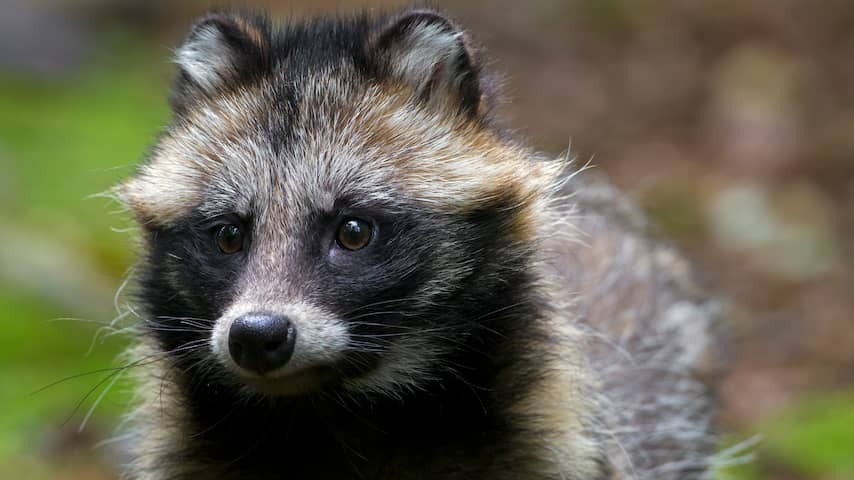
The number of raccoon dogs in the Netherlands is rising rapidly. Part of it comes from Germany, but the Dutch population is also growing. “There is already plenty of reproduction in the five northeastern provinces,” says biologist Paul ten den to Nu.nl.
Ten den thinks that the advance of the raccoon dog cannot be stopped. In Germany, control seems to have little effect. “Thousands of animals are shot there every year, but the numbers do not end.”
The raccoon dog looks like a raccoon, but is a dog species. Hence his name. It is a shy nocturnal animal that lives especially in a swamp area. “A raccoon dog is a free -rangeer who eats that comes in front of him.” A frog, mouse, or a snail. “But it can also be a plum if it once comes to an orchard.”
Although the number of raccoon dogs is increasing, people don’t see the animal often. “Raccoon dogs avoid people and the human environment,” says Ten Den. He investigates the predator for the province of Overijssel. One of the things to come from the research is how harmful the animal is to Dutch nature.
The raccoon dog is an invasive exotic: an animal that does not naturally occur here. With his arrival he can displace or eat other species. “It is of course an extra predator,” says Ten Den. “They might eat a meadow bird’s nest if they encounter it.”
Nevertheless, Ten Den wonders if it makes sense to combat the raccoon dog, because that does not seem to work in Germany. In addition, he thinks that the animal will probably only cause nuisance locally, but the Dutch animals and plants are not very in the way. “It’s not a super big problem and we don’t stop.”
“He fits into a niche that we already have,” adds Maurice La Haye from the Mammal Association. “It is a kind that we ultimately get to have few problems ecologically and economically,” he expects.
The Number of Raccoon Dogs in The Netherlands is Increasing Rapidly. Some of them come from Germany, but the Dutch population is also growing. “Reproduction is Already Taking Place in the Five Northeastern Provinces,” Says Biologist Paul ten Den To Nu.nl.
Ten den does not think that the advance of the raccoon dog can be stopped. In Germany, Control does not seem to have much effect. “Thousands of Animals are shot every year, but the numbers are not decreasing.”
The raccoon dog looks like a raccoon, but is a dog species. Hence its name. It is a shy nocturnal animal that mainly lives in Marshland. “A raccoon Dog is a forager that eats what comes his way.” A frog, mouse, or a snail. “But it can also be a plum if it comes across an orchard.”
Despite the Increasing Number of Raccoon Dogs, People Do Not Often See The Animal. “Raccoon Dogs Avoid people and the Human Environment,” Says ten Den. He is researching the Predator for the Province of Overijssel. One of the things that should come out of the research is how harmful the animal is to Dutch nature.
The Raccoon Dog is an invasive exotic: an animal that does not naturally occur here. With his arrival, he can displace or eat other species. “It is of course an extra predator,” Says ten Den. “They might just eat a meadow bird’s nest if they come across it.”
Yet ten Den Wonders Whether It Makes Sense To Control the Raccoon Dog, because that does not seem to work in Germany. In Addition, he thinks that the animal will probably only cause local nuisance, but will not be much of a problem for dutch animals and plants. “It’s not a super big problem and we can’t stop it anyway.”
“He fits into a niche that we already have,” adds Maurice la Haye of the Mammal Society. “It is a species that we will ultimately have few ecological and economic problems with,” he’s expects.